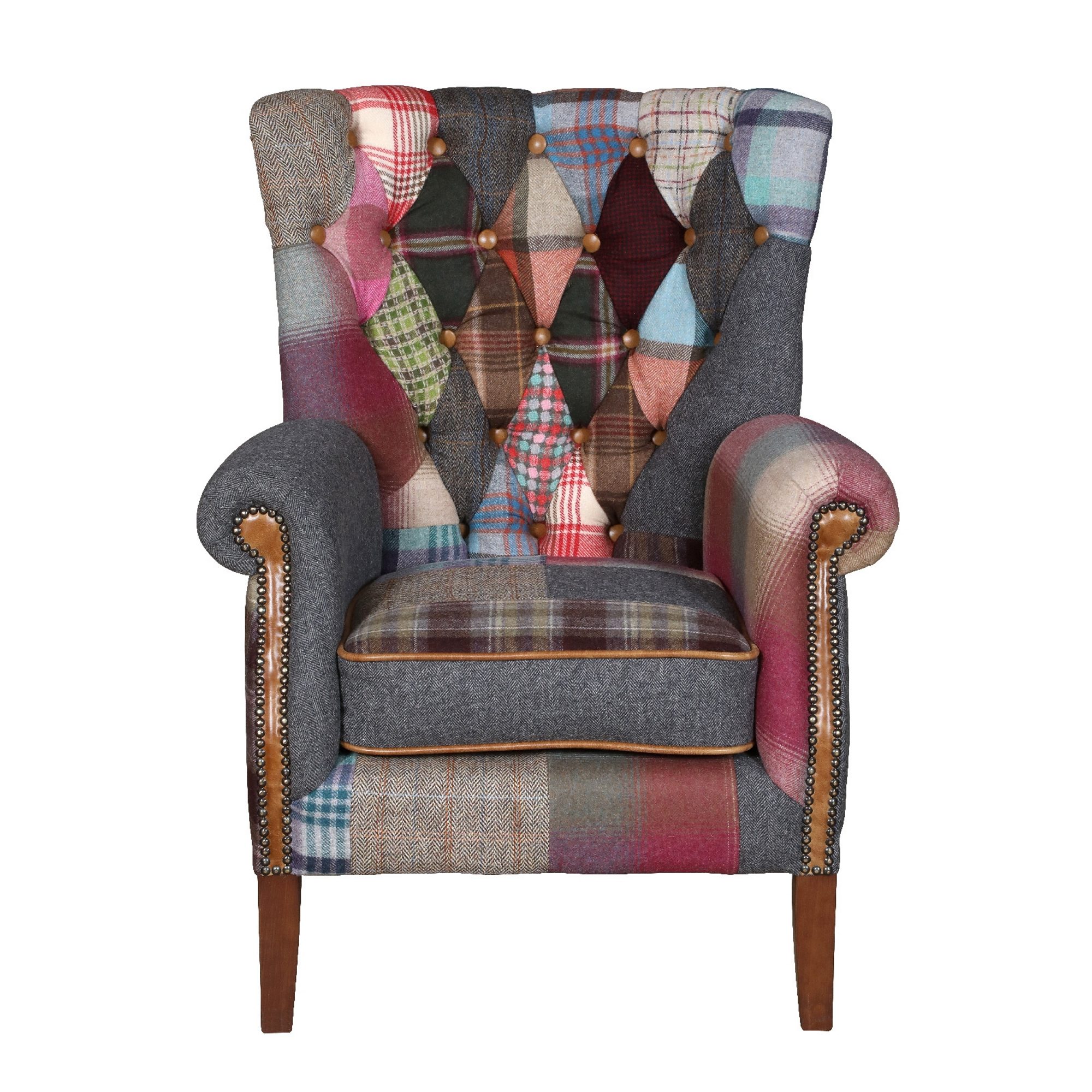Design & Aesthetics of Black and White Patchwork Chairs

The timeless elegance of black and white offers unparalleled versatility in patchwork chair design. This classic color combination allows for striking visual impact, creating chairs that are both modern and enduring. The stark contrast between black and white highlights the patchwork patterns, adding depth and texture to the overall design.
Visual Impact of Black and White Patchwork
The use of black and white in patchwork chair designs creates a sophisticated and versatile aesthetic. The high contrast between the two colors allows for intricate patterns to be easily discerned and appreciated. This simplicity allows the design of the patchwork to be the star, showcasing the skill and creativity of the maker. A black and white palette also works beautifully in a wide range of interior design styles, from minimalist modern to classic traditional. The visual impact can range from bold and graphic to subtly elegant, depending on the chosen pattern and fabric.
Fabric Choices and Aesthetic Effects
The choice of fabric significantly impacts the overall aesthetic of a black and white patchwork chair. Cotton offers a casual, comfortable feel, perfect for a relaxed, informal setting. Linen provides a more textured and slightly rustic look, lending a sense of sophistication and elegance. Wool, on the other hand, introduces warmth and a luxurious feel, ideal for a more formal or traditional interior. The weight and drape of the fabric will also affect the final look; a heavier fabric will create a more substantial chair, while a lighter fabric will result in a more delicate and airy appearance.
Stitching Techniques and Visual Appeal
Various stitching techniques can dramatically enhance the visual appeal of a black and white patchwork chair. Simple straight stitching creates a clean, modern look, while decorative stitches like blanket stitch, running stitch, or even French knots can add intricate detail and texture. The choice of stitch color—black, white, or a contrasting thread—can further enhance the design. For instance, a white thread on black fabric creates a bold Artikel, while a black thread on white fabric provides a subtle yet elegant accent. Using different stitch lengths and patterns can also add visual interest and depth.
Geometric Patchwork Chair Design
| Pattern Name | Fabric Type | Stitch Type | Color Combination |
|---|---|---|---|
| Checkerboard | Cotton | Straight Stitch | Black and White Squares |
| Stripes (varying widths) | Linen | Running Stitch | Alternating Black and White Stripes |
| Triangles (quilted) | Wool | Blanket Stitch | Black and White Triangles, creating a larger geometric shape |
| Diamonds | Cotton Twill | French Knots (accent stitch) | Black and White Diamonds, with French knots outlining each diamond |
Manufacturing & Materials for Black and White Patchwork Chairs

The creation of a black and white patchwork chair involves a careful consideration of materials and a precise manufacturing process. The aesthetic appeal of the final product hinges on the skillful integration of the patchwork fabric with the supporting structure, demanding a balance between form and function. Choosing the right materials and employing efficient construction techniques are crucial for durability and longevity.
The choice of materials significantly impacts the chair’s overall look, feel, and durability. The frame’s material, whether wood or metal, interacts directly with the patchwork fabric, influencing the chair’s weight, strength, and aesthetic character.
Frame Material Comparison: Wood vs. Metal
Wood frames offer a classic, warm aesthetic that complements the black and white patchwork fabric beautifully. Hardwoods like oak or maple provide exceptional strength and durability, capable of supporting the chair’s weight and withstanding years of use. However, wood frames can be more expensive and require more careful finishing to prevent damage from moisture or wear. Metal frames, typically made from steel or iron, provide a more contemporary and industrial look. They are often stronger and more resistant to damage than wood, but can be heavier and require more complex welding or joining techniques. The choice depends on the desired aesthetic and budget. A painted metal frame might contrast nicely with the fabric, while a stained wood frame offers a more harmonious blend.
Construction Process: From Fabric to Finished Chair
The construction of a black and white patchwork chair is a multi-stage process requiring precision and skill. It begins with fabric selection, where a variety of black and white fabrics—cottons, linens, or even recycled materials—are chosen and cut into consistent squares or other shapes. These pieces are then sewn together to create the patchwork panels, paying close attention to the alignment of patterns and seams. The panels are subsequently assembled into the chair’s seat and back cushions. These cushions are then attached to the pre-assembled frame, whether wood or metal. The final stages involve finishing touches, such as adding buttons or piping for aesthetic enhancement, and applying protective coatings to the frame if needed. Quality control at each stage is crucial to ensure a durable and aesthetically pleasing finished product.
Sustainability Considerations in Manufacturing
Minimizing the environmental impact of patchwork chair production requires careful consideration of material sourcing and manufacturing practices. Sourcing sustainably harvested wood for the frame is essential. Using recycled or upcycled fabrics for the patchwork minimizes waste and reduces reliance on new materials. Employing energy-efficient manufacturing processes and minimizing waste during fabric cutting and assembly are also crucial. The use of water-based stains and finishes reduces the emission of volatile organic compounds (VOCs). Exploring partnerships with local suppliers shortens transportation distances and reduces carbon emissions. Choosing durable, long-lasting materials reduces the need for frequent replacements, extending the chair’s lifespan and minimizing waste.
Step-by-Step Guide: Constructing a Simple Patchwork Chair Seat Cushion, Black and white patchwork chair
Creating a simple patchwork chair seat cushion is a rewarding project. Here’s a step-by-step guide:
- Measure and Cut Fabric: Measure the desired dimensions of the cushion and cut out squares of black and white fabric, allowing for seam allowances.
- Sew Fabric Squares: Sew the fabric squares together in a desired pattern, ensuring straight seams and consistent stitching.
- Create Cushion Top: Sew the patchwork squares together to create the top panel of the cushion, pressing seams flat.
- Cut and Sew Cushion Backing: Cut a piece of fabric for the cushion backing, slightly larger than the patchwork top to allow for wrapping.
- Assemble Cushion: Place the patchwork top and backing fabric together, right sides facing inwards. Sew around three sides, leaving one side open for stuffing.
- Stuff and Finish: Turn the cushion right side out and stuff it with filling material. Hand-stitch the remaining open side closed.
Black and White Patchwork Chair in Interior Design

The black and white patchwork chair, a versatile piece of furniture, transcends typical design boundaries. Its inherent contrast and textural richness allow it to seamlessly integrate into a variety of interior styles, from the sleek minimalism of modern design to the cozy warmth of rustic settings. Understanding its placement and how lighting affects its visual impact is crucial for maximizing its aesthetic contribution to any space.
Black and White Patchwork Chairs in Diverse Interior Styles
The adaptability of a black and white patchwork chair is a key factor in its enduring appeal. Its neutral color palette acts as a canvas, allowing it to complement a wide spectrum of surrounding décor. In a modern setting, a chair with bold geometric patches could be placed against a backdrop of clean lines and minimalist furniture. Imagine a stark white wall, a sleek glass coffee table, and chrome accents, all providing a striking contrast to the chair’s textured pattern. The color scheme could incorporate shades of grey, charcoal, and perhaps a single pop of vibrant color in a throw pillow or artwork.
Conversely, in a rustic interior, a chair featuring more organic, irregular patches would feel right at home. Envision it nestled beside a fireplace, surrounded by exposed wooden beams, warm earth tones, and perhaps a sheepskin rug. The chair’s black and white pattern could be subtly echoed in a patterned area rug or in the artwork on the walls. The overall color scheme would be warmer, incorporating browns, creams, and muted greens. A traditional setting could accommodate a black and white patchwork chair with a more classic pattern, perhaps incorporating floral or damask motifs. This chair could be placed in a room with antique furniture, ornate mirrors, and a sophisticated color palette of ivory, cream, and deep navy blue. The chair’s pattern could be echoed in the wallpaper or upholstery of other pieces in the room.
Scale and Proportion of Black and White Patchwork Chairs
The size and proportions of the black and white patchwork chair significantly influence its placement within a room. A smaller chair, for instance, might be ideal for a cozy reading nook or as an accent piece in a larger living area. A larger, more substantial chair, however, could serve as a statement piece, anchoring a seating area or drawing the eye in a spacious room. Careful consideration of the chair’s dimensions relative to the surrounding furniture and the overall size of the room is essential to achieve a balanced and aesthetically pleasing arrangement. A disproportionately large chair in a small room can overwhelm the space, while a tiny chair in a vast room might get lost and appear insignificant.
Lighting and the Black and White Patchwork Chair
Lighting dramatically alters the perception of a black and white patchwork chair. Natural light, particularly soft morning or afternoon sun, will highlight the texture and intricate details of the patchwork, bringing out the subtle variations in shade and tone. In contrast, harsh artificial light might flatten the textures and wash out the contrast, making the pattern appear less defined. Strategic placement of lamps or spotlights can be used to accentuate specific aspects of the chair’s design, enhancing its visual appeal. For example, a strategically placed floor lamp could highlight the chair’s unique texture and create a warm, inviting ambiance. Conversely, overhead lighting might wash out the subtle details and reduce the overall impact of the chair’s design.
Rewritten Article on Black and White Patchwork Chairs
[Insert rewritten sample article text here. This section requires the original article text to be provided for rewriting.]
